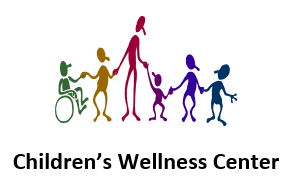Fever
Fever is a very common sign of illness in children. It is defined as a temperature of 100.4oF (38oC) or higher. The most accurate way to take a temperature is rectally. Once a child can hold a thermometer under their tongue, an oral temperature is also accurate. Thermometers that scan the forehead or take temperatures in the ear show a lot of variability and can miss fevers. There is no number you can add to an underarm temperature to correctly estimate a rectal or oral temperature. For that reason, we recommend having a digital thermometer on hand and taking temperatures rectally or, in older children, orally if your child feels warm or is acting sick.
Fever Isn’t Dangerous
Fever itself is not dangerous. Fevers do not cause brain damage. In fact, fever is a normal part of the body’s immune response to slow down viruses and bacteria that cause infections. Those germs grow best at normal human body temperature, so your immune system turns up the heat to slow them down. This is also the reason fevers are common after vaccinations. Fever is a sign the immune system is active.
What You Can Do At Home
If your child is over 2 months old, there is no particular temperature that would require a visit to the ER. As long as your child is not having other worrisome symptoms that need urgent attention, your first priority is keeping them comfortable and hydrated. You can treat fevers with over the counter fever reducers like acetaminophen or ibuprofen. There is more harm in overdosing your child on fever reducers than in allowing them to run a fever, so make sure you are giving the correct dose. We have a dosing chart for both ibuprofen and acetaminophen. You can also give them cool things to eat (popsicles!) or drink, give them a lukewarm bath, or use cool compresses to help with the fever. Remember, we treat fever for your child’s comfort, so if they feel warm while they are sleeping or they do not seem to be bothered by their fever, it is ok to hold off on medications. Make sure they are drinking plenty since they will burn through more fluids when their body temperature is higher.
When To Call Your Pediatrician
If your child is over 2 months old, we generally want to see them in the office if their fever doesn’t break on its own within 3-4 days. You can always bring them in sooner if they have other symptoms that concern you like cough or sore throat.
When To Go To The Emergency Room
If your baby is less than 2 months old and has a temperature of 100.4 or higher, or your baby is showing other signs of serious illness such as difficulty breathing, dehydration, severe pain, or is not responding to you appropriately, you should take them to the emergency room immediately. Because of their immature immune system, fever is more likely to be a sign of a serious bacterial infection in young infants than it is in older children.

